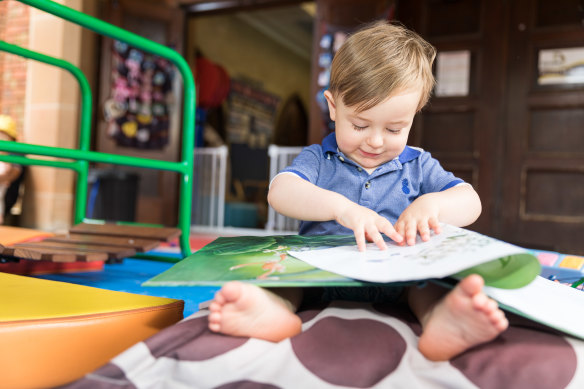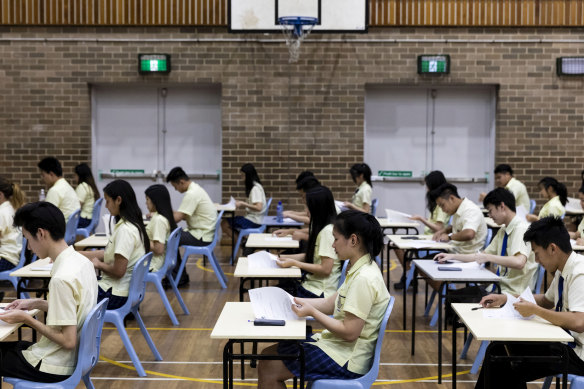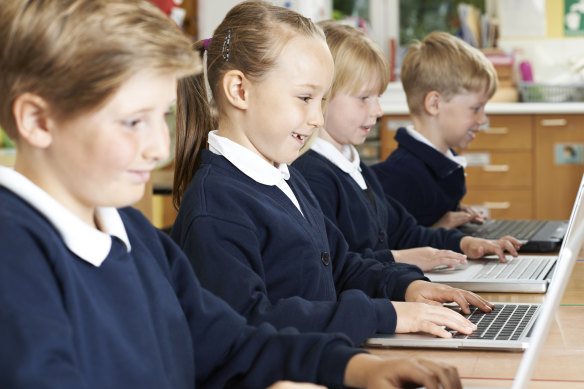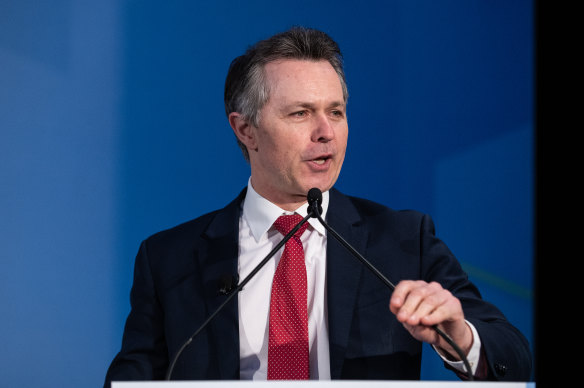This was published 2 years ago
Opinion
Read the room: It’s time to act on our children’s literacy
Roshena Campbell
Melbourne City councillorAs parents around Australia pat themselves on the back for getting through another year’s Book Week, it turns out we don’t have much reason to feel smug.
In looking at the nation’s winners and losers from the jobs summit, footnoted in the latter column are our kids and their literacy.

A disturbingly high number of Australians can neither read nor do basic arithmetic.
When employer groups and the ACTU came together pre-summit to nut out their common principles, one thing they agreed on was the lack of “foundational skills” in this nation. This was their polite of way of saying a disturbingly high number of Australians can neither read nor do basic arithmetic.
If that’s the case, it’s going to take more than free TAFE courses to fix the skills deficit.
But surely our literacy rates can’t be that bad?
We’re a developed nation with an advanced economy after all. Well they are. And getting steadily worse.

Our government considers PISA to be a “health check” on the performance of our education system.Credit: Dominic Lorrimer
Every three years, the OECD assesses and compares how 15-year-olds from 79 countries are going at applying what they’ve learned at school through a test called PISA, or the Programme for International Student Assessment.
Our government considers PISA to be a “health check” on the performance of our education system.
Unfortunately things are pretty crook.
When Australian kids first sat the test in 2000, around 12 per cent of them were found to have the lowest level of reading proficiency which the OECD considers “too low to enable them to participate effectively and productively in life”.
Ouch. And it’s been downhill since then.
The last PISA in 2018 tested 14,000 Australian students and found the percentage of illiterate 15-year-olds had grown to almost 20 per cent. Around 40 per cent of the Australian students were unable to read at a “proficient standard”.
The postponed 2021 PISA is due to be held later this year.
If the trend continues – and given the two years we’ve just had there’s no reason to believe it won’t – state and federal education ministers won’t be looking forward to opening the PISA report cards.

You could perhaps ignore the PISA health check if its results weren’t mirrored in NAPLAN.Credit: iStock
Not least because this decline in literacy has occurred while successive Coalition and Labor governments have been doing their best to improve our children’s education.
Over that time they’ve introduced the national assessment program NAPLAN, the national curriculum and tipped a truckload of extra money in through the Gonski reforms.
You could perhaps ignore the PISA health check if its results weren’t mirrored in NAPLAN.
Before the COVID school closures NAPLAN data from 2019 showed that after a decade in school one-in-five year 9 students couldn’t read well enough.
NAPLAN was cancelled in 2020 but the 2021 results showed no significant changes, although the gap between the literacy of year 9 boys and girls is widening with our sons further behind.
Parents are currently receiving their children’s individual NAPLAN results for 2022 but the national, state and territory data which was supposed to come out last month will be withheld until the end of the year to account for student participation falling to an all-time low.
Bizarrely from this year the graduating certificates of Victoria’s year 12 students will include a score for their literacy and numeracy, something you’d hope would be a given after more than decade in the state’s education system.
No doubt this will give those employers who complained about foundational skills at the Jobs Summit a greater insight into the literacy of potential employees. But it seems rough on the kids. If PISA and NAPLAN are right, too many of them can’t read and write. Surely stamping it on their graduating certificate isn’t going to help.

Education Minister Jason Clare.Credit: Flavio Brancaleone
Clearly for many kids by the time they finish high school it’s too late to remedy literacy.
But what on earth is going on at primary school?
Australian schools are run by state and territory governments and they’re divided on how to best teach kids to read.
In one camp you have phonics advocates who believe phonics is king and your kids should learn by mastering letter-sound combinations, the way most of us were taught who finished primary school last century.
The other camp backs the balanced literacy approach, whereby children learn to read by, among other things, looking at accompanying pictures to see what word would make sense.
Since the 1990s the balanced literacy school has been in the ascendancy.
But in the past decade in NSW, the phonics advocates have struck back after research by the state’s Department of Education found balanced literacy to be less effective.
Just as important as the way reading is taught is making sure we know how kids are going through testing so those who are struggling can be given early intervention.
NSW deserves praise here, even if its statewide phonics test this year found 40 per cent of its year 1 pupils did not read as well as they should.
Phonics isn’t yet front and centre in Victorian state schools where balanced literacy still holds sway, but that may change later this year after the government holds its own year 1 phonics test.
Both states trail South Australia, which started phonics testing in 2018 and saw students meeting the benchmark grow from 43 per cent to 67 per cent last year.
Whether you learn to read proficiently shouldn’t be a state postcode lottery.
If federal Education Minister Jason Clare has one goal this term, it should be making sure all of our kids can read. It’s difficult to think of anything more important.
Delivery might be a matter for the states, but they’ve agreed to work with Canberra to lift student outcomes across the nation as part of the National School Reform Agreement. This includes giving Canberra responsibility for improving national education data. Even if they don’t run any schools, the feds should make it clear to the states and territories that when it comes to literacy, they’re watching.
The Morning Edition newsletter is our guide to the day’s most important and interesting stories, analysis and insights. Sign up here.